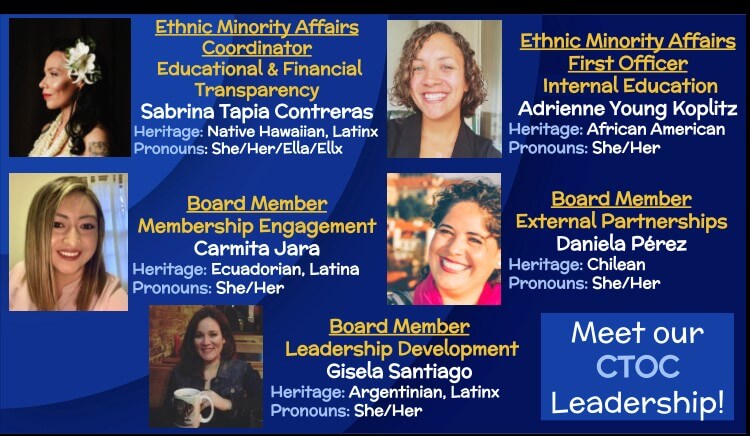The Prior Lake-Savage Education Association’s Coalition for Teachers of Color have begun creating real action steps for the local’s members of color, and creating opportunities for white colleagues to become equity co-conspirators.
The CTOC is a subset of the PLSEA, helping move equity work within the union and district.
“The foundations for the CTOC were always in the district. The CTOC didn’t form by bringing in different personnel, or placing people through a rigorous program. It was membership engagement stripped down to its basic principles. Members being seen, valued, empowered and advocated for,” said Sabrina Tapia Contreras, who serves as the group’s coordinator and sits on the PLSEA Executive Board.

After the murder of George Floyd, PLSEA leadership began having conversations about supporting students, families and members, as well as working on the local’s own equity plan.
“I remember Shawn (Beaudette, the PLSEA local president) calling me,” said Tapia Contreras. “I remember him pausing the conversation and apologizing to me. Apologizing because I had been fighting for the rights of teachers of color for years on the exec board and really hadn’t gotten anywhere to make real change. It was that apology, I think, that really fueled this moving forward. We began with two listening sessions and began sketching out the initial plans for the CTOC.”
While the listening sessions were the start, leaders knew more meaningful connections were needed between the union and members of color.
“Before the listening session, I went back and forth on whether or not I would go. There hadn’t been a ton of effort in the past on behalf to unite and support TOCs, so I was hesitant,” said Adrienne Young Koplitz, the CTOC board’s first officer who leads the internal education work. “I attended, and I’m so glad I did. It was really the meeting that gave the momentum for the CTOC to form.”
Supporting the group, but also providing a space for members of color to lead, has been the job of PLSEA President Shawn Beaudette.

“Our members just need a space where their voices are amplified,” he said. “As leaders, we are also in a position to call out racism in our schools without fear of retaliation. We have also worked to create an atmosphere where, as a group, we communicate to advance equity work as an entire membership.”
The CTOC formed a board with five members of color, all of whom are leading in specific areas of work.
“Each of the board areas is specifically designed to address direct blockades that contribute to the low percentage of involvement for teachers of color both in our district and across the state: membership engagement, educational and financial transparency, internal education, external partnerships and leadership development,” Tapia Contreras said.
Since August, the CTOC has established a parent affinity group, launched a fundraiser and assisted the district’s school board in drafting an equity resolution, said Young Koplitz.
“We held our first Parent Affinity Group in October, where we invited parents of color or white parents with students of color to come together for discussion and connection, and we continue to hold them on a monthly basis,” she said. “We sold PLSEA CTOC Co-Conspirator T-shirts, and they were a huge hit. With the purchase of a shirt, folks got an invitation to join our Co-Conspirator Cohort, a group of allies committed to meaningful change and building community. We raised $2,100, which we are investing in teachers who need financial assistance on their equity journey through grant opportunities.”
The CTOC has also been coordinating anti-racism professional development for staff.
In January and February, they partnered with Humanize My Hoodie and Education Minnesota to offer free workshops to PLSEA and Education Minnesota members, with about 120 educators attending.
”We have had great attendance at professional learning sessions, and that will continue to grow internally now that other members see the work that is being done,” said Beaudette. ”Our members leading the CTOC have done an amazing job engaging with members and finding opportunities that really fit with what people need.”
Tapia Contreras is now working on a three-year and five-year plan for the group, and is applying for grant funding from the Education Minnesota Foundation and National Education Association.
“I tell people the biggest overlying goal is to create a shoulder-to-shoulder experience where community members, teachers, school board members and administration are recognizing where their own personal privileges lie, where accountability needs to be held and calling people in, rather than calling people out, to create healing,” she said.
Creating the trust in the union and district systems with members of color takes time and was even more difficult in a pandemic, said Tapia Contreras.
“We can sell all the T-shirts in the world, but if we’re not making real changes that affect teacher’s lives to improve their quality of life, they are not going to buy into another equity group promise,” she said.
“Especially in a year like this, folks are drowning in work and transitions and lack of support, so finding the energy to press on with equity work can be daunting,” said Young Koplitz. “Overall, the response has been positive and encouraging, from both TOC and white teachers alike. We have about a dozen active members in our CTOC, and about 25 total TOCs in our district. We’re working on getting more folks involved.”
Tapia Contreras, Young Koplitz and Beaudette all encourage other locals to look at engaging, empowering and advocating for members of color and equity work.
“I think there’s a large misconception that you can’t start a TOC group in a district without a lot of TOCs,” said Young Koplitz. “We are proof here in PLSAS that you can establish, maintain and grow a powerful, change-making group where TOCs make up only about 4 percent of the teaching staff. All you need to begin is a handful of individuals committed to the cause, and local leadership who is willing and able to walk with you every step of the way.”
“It’s also okay to start small and know that there are people that want to make some changes — they just need a space to get started,” said Beaudette. “Local leaders have to be ready for the tough conversations. Know people will push back and it’s a part of the necessary process.”
“Every single district has a CTOC waiting to explode,” said Tapia Contreras. “Our Ethnic Minority Affairs Council forums at Education Minnesota, and their community partnership programs, have been working diligently and deserve a lot of recognition for laying down the groundwork for any of this to take flight.”


